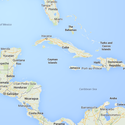-
About
- About Listly
- Community & Support
- Howto
- Chrome Extension
- Bookmarklet
- WordPress Plugin
- Listly Premium
- Privacy
- Terms
- DMCA Copyright
- © 2010-2025 Boomy Labs

 List Builder
List Builder
Listly by List Builder
Top Things to Do in Rio de Janeiro, Brazil, from a Cruise Ship - Feel free to add, vote or provide feedback to the list
Sugarloaf Mountain ( Portuguese: Pão de Açúcar) is a peak situated in Rio de Janeiro, Brazil, at the mouth of Guanabara Bay on a peninsula that sticks out into the Atlantic Ocean. Rising 396 metres (1,299 ft) above the harbor, its name is said to refer to its resemblance to the traditional shape of concentrated refined loaf sugar.
The Theatro Municipal (Municipal Theatre) of Rio de Janeiro is located in Cinelândia (Praça Marechal Floriano) in the city center of Rio de Janeiro, Brazil. Built in the beginning of the twentieth century, it is considered to be one of the most beautiful and important theatres in the country.
Pedra da Gávea is a mountain in Tijuca Forest, Rio de Janeiro, Brazil. Composed of granite and gneiss, its elevation is 844 metres (2,769 ft), making it one of the highest mountains in the world that ends directly in the ocean.
Urca is a traditional and wealthy residential neighborhood with nearly 7,000 inhabitants (2000 census) in Rio de Janeiro, Brazil. Although most of the neighborhood dates from the 1920s, parts of it are much older.
Christ the Redeemer ( Portuguese: Cristo Redentor, standard Brazilian Portuguese: [ˈkɾistu ʁedẽˈtoʁ] , local dialect: [ˈkɾiʃtu ɦedẽjˈtoɦ]) is an Art Deco statue of Jesus Christ in Rio de Janeiro, Brazil. It was considered the largest Christ statue in the world from 1931 until 2010 when it was topped by the Christ the King statue in Poland.
The Centro Cultural Banco do Brasil ( CCBB, in English: Bank of Brazil Cultural Center) is a cultural organization of the Banco do Brasil based in Brazil with centers in Rio de Janeiro, Brasilia, and São Paulo. The CCBB began in 1986. It opened in Rio de Janeiro in 1989, Brasilia in 2000, and São Paulo in 2001.
needs additional citations for verification . improve this article by adding citations to reliable sources. Unsourced material may be challenged and removed. (February 2009)
Arpoador (literally, the harpoon thrower) is a region located on the southern zone of the city Rio de Janeiro, in a small peninsula between Ipanema and Copacabana. It is not officially recognized as a neighborhood of Rio de Janeiro, with part of its territory belonging officially to the neighbourhood of Ipanema, and the remaining part belonging officially to the neighbourhood of Copacabana.
São Bento (Portuguese for Saint Benedict) may refer to:
German farmers from the Rhineland were encouraged to immigrate and to settle on the Emperor's outlying lands, to help give the Palace a charming urban setting. The settlement of Petrópolis was founded on March 16, 1843. It became a city in 1857.
